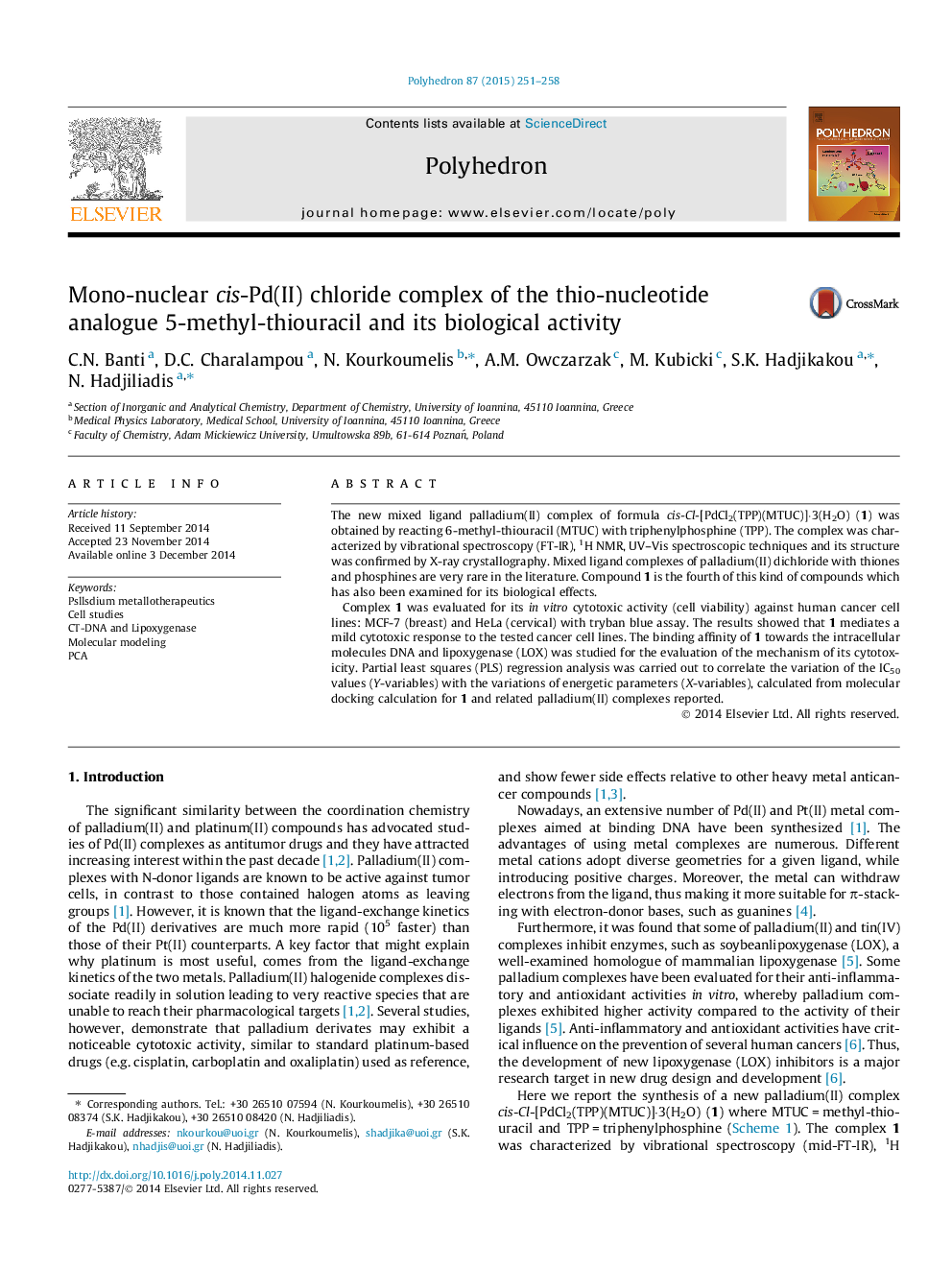| Article ID | Journal | Published Year | Pages | File Type |
|---|---|---|---|---|
| 1337364 | Polyhedron | 2015 | 8 Pages |
The new mixed ligand palladium(II) complex of formula cis-Cl-[PdCl2(TPP)(MTUC)]·3(H2O) (1) was obtained by reacting 6-methyl-thiouracil (MTUC) with triphenylphosphine (TPP). The complex was characterized by vibrational spectroscopy (FT-IR), 1H NMR, UV–Vis spectroscopic techniques and its structure was confirmed by X-ray crystallography. Mixed ligand complexes of palladium(II) dichloride with thiones and phosphines are very rare in the literature. Compound 1 is the fourth of this kind of compounds which has also been examined for its biological effects.Complex 1 was evaluated for its in vitro cytotoxic activity (cell viability) against human cancer cell lines: MCF-7 (breast) and HeLa (cervical) with tryban blue assay. The results showed that 1 mediates a mild cytotoxic response to the tested cancer cell lines. The binding affinity of 1 towards the intracellular molecules DNA and lipoxygenase (LOX) was studied for the evaluation of the mechanism of its cytotoxicity. Partial least squares (PLS) regression analysis was carried out to correlate the variation of the IC50 values (Y-variables) with the variations of energetic parameters (X-variables), calculated from molecular docking calculation for 1 and related palladium(II) complexes reported.
Graphical abstractThe new palladium(II) complex cis-Cl-[PdCl2(TPP)(MTUC)]·3(H2O) (MTUC = 6-methyl-thiouracil and TPP = triphenylphosphine) was evaluated for its in vitro cytotoxicity against MCF-7 (breast) and HeLa (cervical) cancer cell lines. The binding affinity of 1 towards DNA and lipoxygenase was also studied. Partial least squares regression analysis correlates the variation of the IC50 values with the variations of energetic parameters of 1 and related palladium(II) complexes.Figure optionsDownload full-size imageDownload as PowerPoint slide
